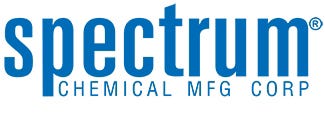acumedia® Hektoen Enteric Agar
• Intended Use: Hektoen Enteric Agar is used for the isolation and differentiation of enteric pathogens.
• Product Summary and Explanation: Hektoen Enteric Agar was developed in 1967 by King and Metzger. Compared to other enteric differentiating media commonly used in clinical laboratories, Hektoen Enteric Agar increased the isolation rate of Salmonella spp. and Shigella spp. This was accomplished by increasing the carbohydrate and peptone content of the medium in order to counteract the inhibitory effects of bile salts and indicators. King and Metzger formulated a medium that slightly inhibited growth of Salmonella and Shigella, while inhibiting Gram-positive microorganisms.
Hektoen Enteric Agar is used to isolate and differentiate Salmonella spp. and Shigella spp., both of which cause a variety of serious human gastrointestinal illnesses. Salmonellosis continues to be an important public health problem worldwide. Infection with non-typhi Salmonella often causes mild, self-limiting illness. Typhoid fever, caused by S. typhi, is characterized by fever, headache, diarrhea, and abdominal pain, and can result in fatal respiratory, hepatic, and or neurological damage. This infection can result from consumption of raw, undercooked, or improperly processed foods contaminated with Salmonella spp. U.S. federal guidelines require various poultry products to be routinely monitored before distribution for human consumption. A variety of procedures have been developed using Hektoen Enteric Agar as part of the multi-step procedure to isolate Salmonella spp. from food samples.
Image(s) are representative of the product group and not necessarily the individual product.
Read More
• Product Summary and Explanation: Hektoen Enteric Agar was developed in 1967 by King and Metzger. Compared to other enteric differentiating media commonly used in clinical laboratories, Hektoen Enteric Agar increased the isolation rate of Salmonella spp. and Shigella spp. This was accomplished by increasing the carbohydrate and peptone content of the medium in order to counteract the inhibitory effects of bile salts and indicators. King and Metzger formulated a medium that slightly inhibited growth of Salmonella and Shigella, while inhibiting Gram-positive microorganisms.
Hektoen Enteric Agar is used to isolate and differentiate Salmonella spp. and Shigella spp., both of which cause a variety of serious human gastrointestinal illnesses. Salmonellosis continues to be an important public health problem worldwide. Infection with non-typhi Salmonella often causes mild, self-limiting illness. Typhoid fever, caused by S. typhi, is characterized by fever, headache, diarrhea, and abdominal pain, and can result in fatal respiratory, hepatic, and or neurological damage. This infection can result from consumption of raw, undercooked, or improperly processed foods contaminated with Salmonella spp. U.S. federal guidelines require various poultry products to be routinely monitored before distribution for human consumption. A variety of procedures have been developed using Hektoen Enteric Agar as part of the multi-step procedure to isolate Salmonella spp. from food samples.
Image(s) are representative of the product group and not necessarily the individual product.
• Intended Use: Hektoen Enteric Agar is used for the isolation and differentiation of enteric pathogens.
• Product Summary and Explanation: Hektoen Enteric Agar was developed in 1967 by King and Metzger. Compared to other enteric differentiating media commonly used in clinical laboratories, Hektoen Enteric Agar increased the isolation rate of Salmonella spp. and Shigella spp. This was accomplished by increasing the carbohydrate and peptone content of the medium in order to counteract the inhibitory effects of bile salts and indicators. King and Metzger formulated a medium that slightly inhibited growth of Salmonella and Shigella, while inhibiting Gram-positive microorganisms.
Hektoen Enteric Agar is used to isolate and differentiate Salmonella spp. and Shigella spp., both of which cause a variety of serious human gastrointestinal illnesses. Salmonellosis continues to be an important public health problem worldwide. Infection with non-typhi Salmonella often causes mild, self-limiting illness. Typhoid fever, caused by S. typhi, is characterized by fever, headache, diarrhea, and abdominal pain, and can result in fatal respiratory, hepatic, and or neurological damage. This infection can result from consumption of raw, undercooked, or improperly processed foods contaminated with Salmonella spp. U.S. federal guidelines require various poultry products to be routinely monitored before distribution for human consumption. A variety of procedures have been developed using Hektoen Enteric Agar as part of the multi-step procedure to isolate Salmonella spp. from food samples.
Image(s) are representative of the product group and not necessarily the individual product.
• Product Summary and Explanation: Hektoen Enteric Agar was developed in 1967 by King and Metzger. Compared to other enteric differentiating media commonly used in clinical laboratories, Hektoen Enteric Agar increased the isolation rate of Salmonella spp. and Shigella spp. This was accomplished by increasing the carbohydrate and peptone content of the medium in order to counteract the inhibitory effects of bile salts and indicators. King and Metzger formulated a medium that slightly inhibited growth of Salmonella and Shigella, while inhibiting Gram-positive microorganisms.
Hektoen Enteric Agar is used to isolate and differentiate Salmonella spp. and Shigella spp., both of which cause a variety of serious human gastrointestinal illnesses. Salmonellosis continues to be an important public health problem worldwide. Infection with non-typhi Salmonella often causes mild, self-limiting illness. Typhoid fever, caused by S. typhi, is characterized by fever, headache, diarrhea, and abdominal pain, and can result in fatal respiratory, hepatic, and or neurological damage. This infection can result from consumption of raw, undercooked, or improperly processed foods contaminated with Salmonella spp. U.S. federal guidelines require various poultry products to be routinely monitored before distribution for human consumption. A variety of procedures have been developed using Hektoen Enteric Agar as part of the multi-step procedure to isolate Salmonella spp. from food samples.
Image(s) are representative of the product group and not necessarily the individual product.
Certificates of Analysis
This service is currently unavailable!





